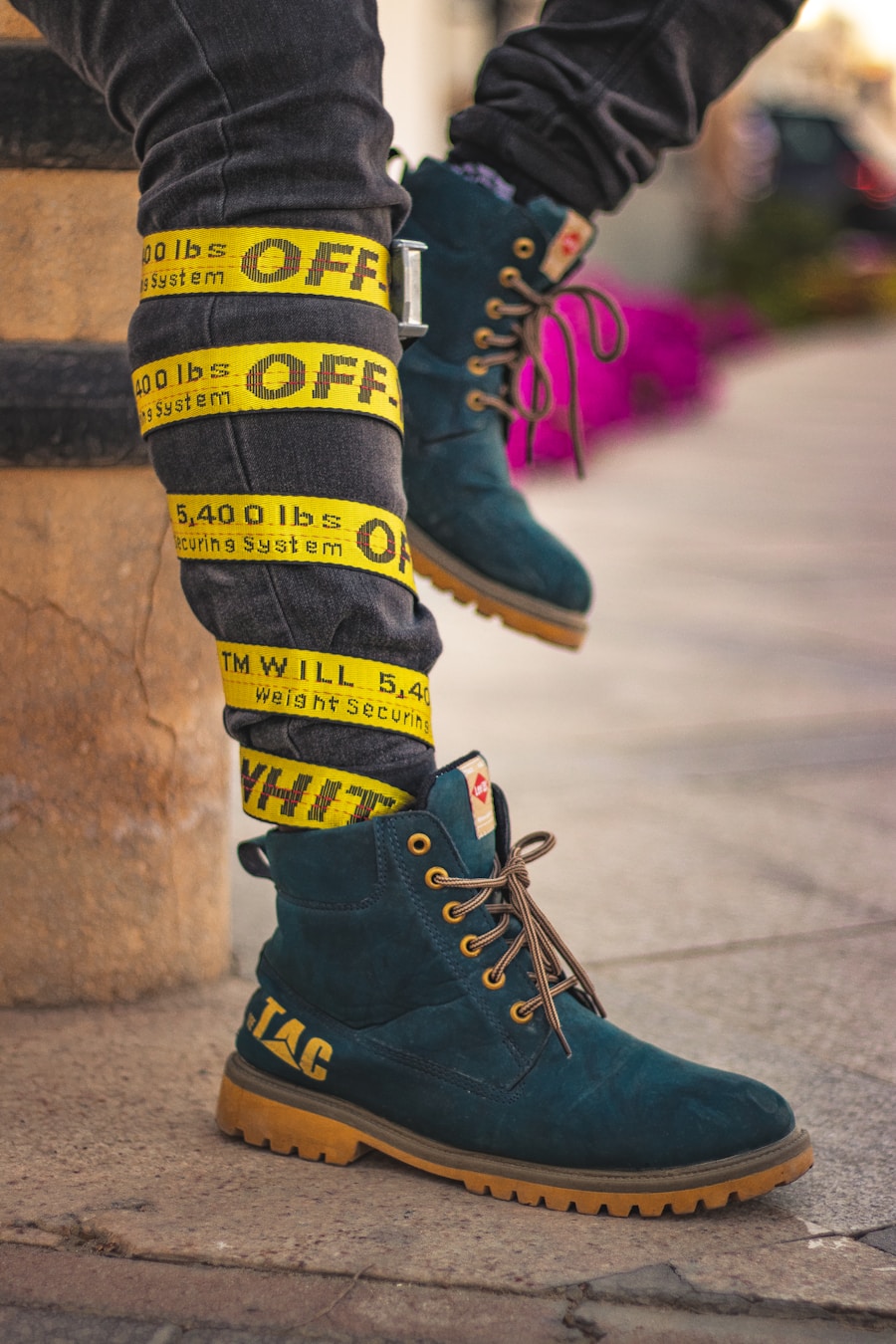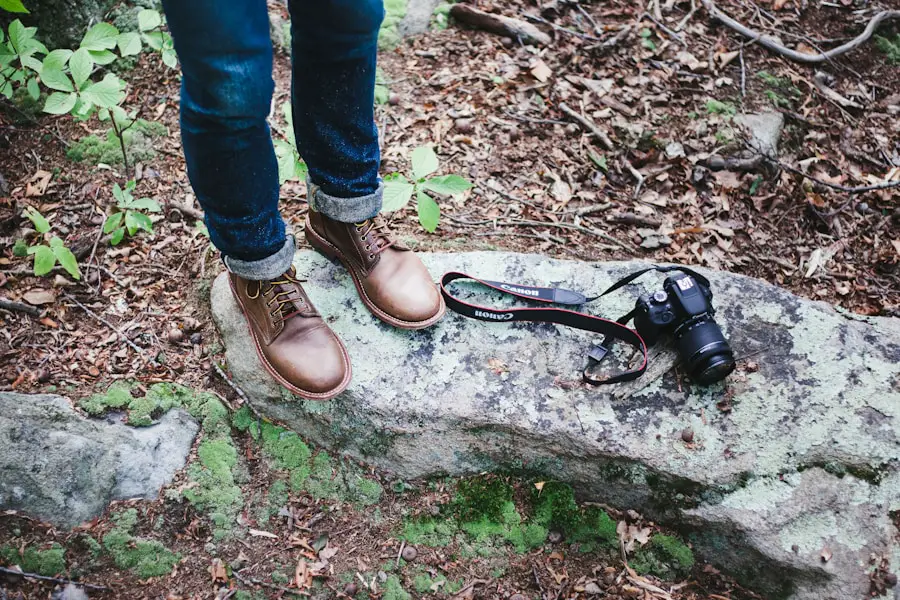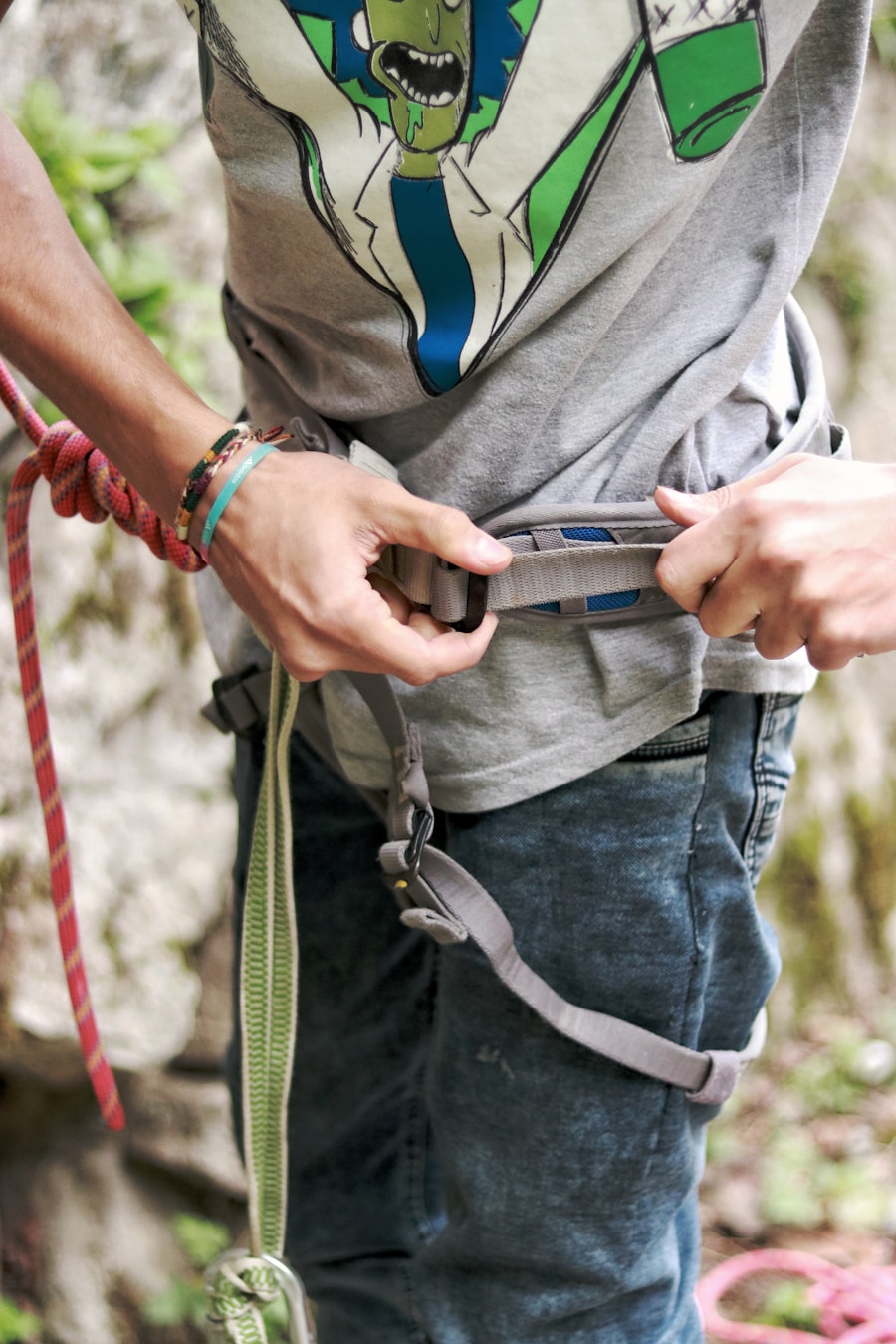Properly tying your hiking boots is a fundamental aspect of outdoor preparation that can significantly impact your overall hiking experience. When boots are laced correctly, they provide essential support to the ankles, reduce the risk of blisters, and enhance stability on uneven terrain. A well-tied boot can mean the difference between a comfortable trek and a painful ordeal.
The right lacing technique ensures that the foot is securely held in place, minimizing movement within the boot that can lead to chafing and discomfort. This is particularly crucial during long hikes where fatigue can exacerbate any minor issues. Moreover, the importance of lacing extends beyond comfort; it also plays a vital role in safety.
Loose or improperly tied boots can lead to slips and falls, especially on rocky or steep trails. When your foot is not adequately secured, it can slide around inside the boot, increasing the likelihood of twisting an ankle or losing balance. Therefore, understanding how to tie your hiking boots properly is not just a matter of comfort; it is a critical safety measure that every hiker should prioritize before embarking on their journey.
Key Takeaways
- Properly tying your hiking boots is crucial for preventing injuries and ensuring a comfortable hiking experience.
- Different lacing techniques can provide better support and comfort for different foot shapes and hiking conditions.
- Follow a step-by-step guide to tie your hiking boots for maximum support and comfort, including lace lock techniques.
- Prevent common issues such as heel slippage and toe pain by adjusting your lacing technique and using the right knots.
- Adjust your hiking boot laces to different terrains and conditions for optimal performance and comfort.
Understanding Different Types of Hiking Boot Lacing Techniques
Hiking boot lacing techniques vary widely, each designed to address specific needs and preferences. The most common method is the standard crisscross lacing, where the laces cross over each other as they ascend the boot. This technique provides a balanced fit and is suitable for most hiking conditions.
However, for those who require additional ankle support, techniques such as the heel lock or lace lock can be employed. The heel lock method involves creating a loop at the top of the boot, which helps to secure the heel in place and prevent it from lifting during movement. Another popular technique is the straight lacing method, which offers a unique aesthetic while also providing a snug fit.
This method is particularly beneficial for individuals with high arches or those who experience pressure points with traditional crisscross lacing. Additionally, there are specialized lacing techniques designed for specific conditions, such as the gap lacing method for those with wide feet or the double back lacing for enhanced security on steep descents. Understanding these various techniques allows hikers to customize their boot fit according to their unique foot shape and hiking style.
Step-by-Step Guide to Tying Your Hiking Boots for Maximum Support and Comfort

To achieve maximum support and comfort when tying your hiking boots, start by loosening the laces completely before putting on your boots. This allows for easier entry and ensures that your foot can settle into the heel pocket properly. Once your foot is in place, begin lacing from the bottom up using the crisscross method.
Pull each lace snugly but not excessively tight; you want to ensure that your foot is secure without cutting off circulation. As you reach the top of the boot, consider employing a heel lock technique for added support. To do this, create a loop with each lace at the top eyelet by threading it through the last hole before crossing it over to form a loop.
Then, take the lace from the opposite side and thread it through this loop before pulling tight. This will create a secure hold around your ankle, preventing any unwanted movement during your hike. Finally, tie off your laces with a double knot to ensure they remain secure throughout your trek.
Tips for Preventing Common Issues with Hiking Boot Lacing
| Common Issue | Preventative Tips |
|---|---|
| Heel Slippage | Use a heel lock lacing technique to secure the heel in place |
| Toe Blisters | Ensure proper fit and use a lace loop to relieve pressure on the toes |
| Foot Fatigue | Utilize a midfoot lacing technique to provide additional support |
| Ankle Pain | Adjust lacing tension to provide adequate ankle support without constriction |
| Hot Spots | Use a combination of lacing techniques to distribute pressure evenly across the foot |
Common issues with hiking boot lacing can detract from an enjoyable outdoor experience if not addressed properly. One frequent problem is lace slippage, where laces come undone during a hike. To prevent this, always use a double knot when securing your laces.
Additionally, consider using lace locks or toggles that can help keep your laces in place without requiring constant adjustments. Another issue hikers often face is discomfort caused by pressure points or pinching from tight laces. To mitigate this, pay attention to how you lace your boots.
If you notice discomfort in specific areas, try adjusting the tension in those sections by loosening or tightening individual eyelets as needed. Furthermore, consider using laces made from materials that provide some stretch; this can help accommodate foot movement without compromising support.
How to Adjust Your Hiking Boot Laces for Different Terrains and Conditions
Adjusting your hiking boot laces according to terrain and conditions is essential for optimizing performance and comfort. On flat and well-maintained trails, a standard crisscross lacing technique may suffice. However, when tackling steep inclines or rocky paths, you may want to tighten your laces more securely to prevent your foot from sliding forward in the boot.
This added tension helps maintain stability and reduces the risk of blisters caused by friction. In wet or muddy conditions, consider using a tighter lacing technique to keep debris out of your boots and ensure that your feet remain dry. Additionally, if you are hiking in colder weather, you might want to leave some extra room in your laces to accommodate thicker socks or foot warmers.
Conversely, during hot weather, loosening your laces slightly can allow for better airflow and reduce sweating inside the boot.
The Role of Knots and Lace Locks in Securing Your Hiking Boots

Knots and lace locks play a crucial role in securing hiking boots effectively. While many hikers rely on traditional knots like the bow knot or double knot for securing their laces, lace locks offer an innovative alternative that provides enhanced security without the bulk of traditional knots. Lace locks work by allowing hikers to adjust tension easily while keeping their laces firmly in place throughout their hike.
Using lace locks can be particularly beneficial for those who frequently encounter uneven terrain or engage in activities that require quick adjustments to their footwear. By simply pulling on the toggle mechanism, hikers can tighten or loosen their laces without having to retie them completely. This feature not only saves time but also ensures that boots remain snugly fitted regardless of changes in elevation or foot swelling during long hikes.
Expert Advice on Choosing the Right Laces for Your Hiking Boots
Choosing the right laces for your hiking boots is an often-overlooked aspect of outdoor gear selection that can significantly affect performance and comfort. When selecting laces, consider factors such as material, length, and thickness. Nylon and polyester are popular choices due to their durability and resistance to fraying; they also tend to hold knots well under tension.
For those who prefer a more natural option, cotton laces offer comfort but may not withstand harsh weather conditions as effectively. The length of your laces should correspond with the number of eyelets on your boots; typically, longer boots require longer laces to ensure adequate coverage and support. Additionally, thicker laces provide more grip within eyelets but may be harder to tighten effectively compared to thinner options.
Ultimately, selecting the right laces involves balancing durability with functionality while considering personal preferences regarding fit and feel.
Troubleshooting and Maintenance for Hiking Boot Laces
Maintaining hiking boot laces is essential for ensuring longevity and optimal performance during outdoor adventures. Regularly inspect your laces for signs of wear and tear such as fraying or breaking; replacing damaged laces promptly can prevent unexpected issues on the trail. When cleaning your boots after a hike, take care to clean the laces as well; dirt and debris can accumulate over time and affect their performance.
If you find that your laces frequently come undone despite using knots or lace locks, consider experimenting with different knot techniques or switching to a different type of lace altogether. Some hikers find that certain materials hold knots better than others; thus, trying out various options may lead to improved results. Additionally, keeping spare laces in your pack can be a lifesaver in case of emergencies while out on the trail, ensuring that you are always prepared for any situation that may arise during your hike.
If you’re gearing up for a hiking trip, you’ll want to make sure your boots are securely tied to prevent any blisters or discomfort. Check out this helpful article on how to tie a hiking boot for some useful tips and techniques. Properly lacing your boots can make a big difference in your comfort and performance on the trail.
Love travel? Join Our Facebook Community For More Tips.
FAQs
What are the benefits of properly tying hiking boots?
Properly tying hiking boots provides better support and stability for your feet, reduces the risk of blisters and hot spots, and ensures a comfortable and secure fit for long hikes.
What is the best way to tie hiking boots for ankle support?
For ankle support, use the “heel lock” or “lace lock” technique. This involves creating a loop with the laces around the top two eyelets of the boot and then crossing the laces through the loops to create a secure lock around the ankle.
How do you tie hiking boots to prevent heel slippage?
To prevent heel slippage, use the “heel lock” technique. This involves creating a loop with the laces around the top two eyelets of the boot and then crossing the laces through the loops to create a secure lock around the ankle.
What is the best way to tie hiking boots for downhill hiking?
For downhill hiking, it’s best to use the “heel lock” or “lace lock” technique to secure the ankle and prevent the foot from sliding forward in the boot.
How do you tie hiking boots to relieve pressure on the top of the foot?
To relieve pressure on the top of the foot, you can use the “window lacing” technique. This involves skipping one or more eyelets when lacing the boots to create a window of relief for the pressure point on the foot.
